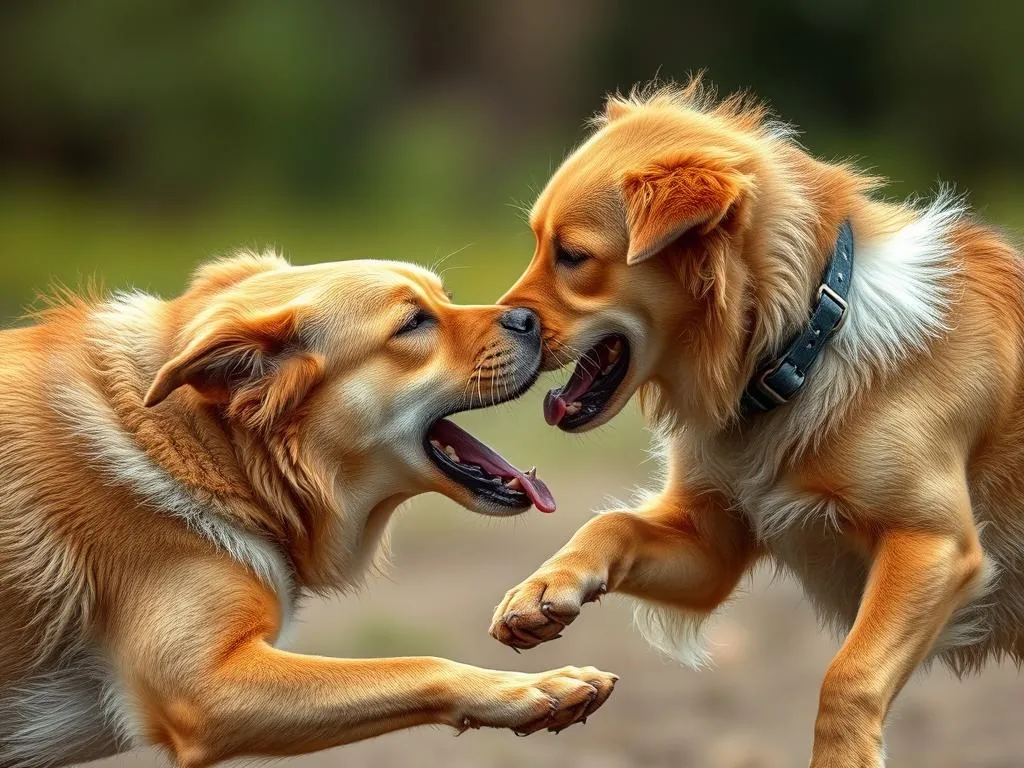
Introduction
Play fighting is a common behavior observed in dogs, often characterized by mock battles and playful interactions. Understanding this behavior is crucial for dog owners, as it can provide insights into their pet’s emotional and physical well-being. In this article, we will explore the nuances of play fighting, why dogs engage in this behavior, and how to ensure it remains a healthy part of their lives.
The Basics of Dog Behavior
Understanding Canine Communication
Dogs communicate primarily through body language and vocalizations. Their tails, ears, and posture all convey messages about their feelings and intentions. Observing these cues can help dog owners understand their pet’s emotional state, especially during play fighting, which can sometimes mimic aggressive behavior.
Types of Dog Play
Dogs engage in various types of play that can be classified into three main categories:
- Social Play: Interactions with other dogs or humans that promote bonding.
- Solitary Play: Activities dogs engage in alone, such as chewing toys.
- Rough Play: More boisterous interactions, often involving chasing and wrestling.
The Role of Play in Dog Development
Play is essential for dogs of all ages, serving as a critical component for socialization and mental stimulation. Puppies learn boundaries and social cues through play, while adult dogs maintain their agility and social skills. Recognizing the importance of play can help dog owners foster healthy behaviors in their furry companions.
What is Play Fighting?
Characteristics of Play Fighting
Play fighting typically includes behaviors such as:
- Play bowing: A dog stretches its front legs forward while keeping its rear end up, signaling a desire to play.
- Growling: A low growl can indicate excitement rather than aggression.
- Chasing: Dogs often engage in playful pursuit during these interactions.
Distinguishing Play Fighting from Aggressive Behavior
While play fighting can appear rough, there are key differences between it and true aggression:
- Body Language: Playful dogs exhibit relaxed body postures, while aggressive dogs may have rigid bodies and raised hackles.
- Vocalizations: Play fighting includes playful growls and barks, whereas aggressive barking is sharp and threatening.
- Duration: Play fighting typically involves periods of rest and reprieve, while aggressive encounters tend to be more sustained.
Common Scenarios for Play Fighting
Dogs often play fight in various situations, including:
- With Other Dogs: Most commonly seen in dog parks or during playdates.
- With Humans: Engaging in tug-of-war or wrestling games.
- With Toys: Using toys as props for mock battles.
Why Do Dogs Engage in Play Fighting?
Instinctual Behavior
Playing is an instinctual behavior rooted in a dog’s ancestry. Wild canines engage in play fighting to develop essential skills for hunting and survival. This natural instinct has been retained in domesticated dogs, manifesting in their playful interactions.
Socialization and Bonding
Play fighting serves as a social tool, helping dogs establish and reinforce relationships with both other dogs and humans. Through these interactions, dogs learn important social cues and develop mutual trust, fostering a stronger bond.
Physical Exercise and Skill Development
Engaging in play fighting promotes physical fitness by encouraging movement and agility. It also allows dogs to hone their survival skills, such as coordination and reflexes, which are essential for their overall well-being.
Stress Relief and Emotional Well-being
Play fighting can also serve as a form of stress relief. It allows dogs to expend energy, reducing anxiety and promoting emotional health. This behavior can be particularly beneficial for dogs that may feel confined or stressed in certain environments.
Factors Influencing Play Fighting Behavior
Age and Development Stage
A dog’s age significantly influences its propensity to engage in play fighting. Puppies are more likely to engage in rough play as they learn social skills, while older dogs may prefer less intense interactions.
Breed Characteristics
Different breeds exhibit varying tendencies towards play fighting. For instance, herding breeds may engage in more intense play due to their high energy levels, while smaller breeds might prefer gentler interactions. Understanding a dog’s breed characteristics can help owners anticipate their play behavior.
Individual Personality Traits
Just like humans, dogs have unique personality traits that can influence their play fighting behavior. Some may be more playful and outgoing, while others might be reserved or less interested in physical play. Recognizing these traits can help owners tailor play experiences to their dog’s preferences.
Environmental Influences
The social environment and living conditions also play a role in how dogs engage in play fighting. Dogs raised in social households with ample opportunities for interaction are more likely to develop healthy play behaviors compared to those in isolated situations.
Safety Considerations for Play Fighting
Monitoring Play Behavior
As a dog owner, it’s essential to monitor your dog’s play behavior. Observing interactions can help you identify what constitutes healthy play versus when it becomes too intense. Keep an eye on body language and vocalizations to ensure that play fighting remains safe and enjoyable.
Recognizing Signs of Overstimulation
There are several indicators that play fighting is becoming too intense:
- Excessive Barking: If the barking escalates or becomes frantic, it may signal overstimulation.
- Tiredness: If one dog appears overly fatigued but cannot escape, it may be time to intervene.
- Changes in Body Language: Watch for signs of discomfort, such as tucked tails or pinned ears.
Setting Boundaries and Rules
Establishing clear boundaries for play fighting is crucial. For instance, owners can intervene if play becomes too rough or if one dog shows signs of distress. Ensuring that play remains enjoyable for all parties involved is vital for maintaining positive interactions.
When to Intervene
Knowing when to step in during play fighting is essential for maintaining safety:
- If one dog exhibits fear or anxiety: Intervene immediately to prevent potential harm.
- If play turns into chasing that overwhelms one dog: This can lead to stress or injury, and it’s a good time to redirect the play.
Encouraging Healthy Play Fighting
Creating a Safe Play Environment
Setting up a safe space for dogs to engage in play fighting is essential. Ensure the area is free of hazards, such as sharp objects or obstacles that could lead to injury. A fenced yard or designated play area can provide a secure environment for dogs to interact.
Choosing Playmates Wisely
Selecting appropriate play partners is crucial. Ensure that the dogs involved in play fighting have compatible play styles and temperaments. Larger dogs may unintentionally hurt smaller dogs, so it’s essential to match playmates based on size and energy levels.
Training and Socialization
Training plays a significant role in encouraging healthy play fighting behavior. Teaching commands such as “leave it” or “enough” can help owners manage playtime effectively. Additionally, socializing dogs with diverse playmates can help them learn appropriate boundaries and behaviors.
Conclusion
In summary, understanding why dogs play fight is essential for any dog owner. Recognizing the characteristics of play fighting, the motivations behind it, and the factors that influence this behavior can help owners create a safe and enjoyable environment for their pets. By fostering healthy play fighting interactions, you contribute to your dog’s overall well-being and happiness. Observing and appreciating this natural behavior can deepen the bond between you and your furry friend.









